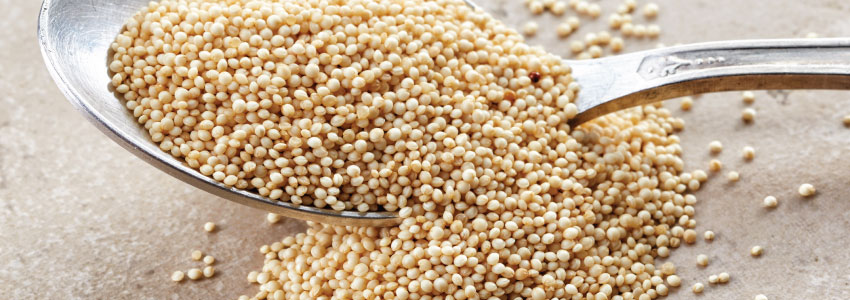Discovering Ancient Grains: Amaranth
Amaranth is a naturally gluten free grain that has been cultivated for over 800 years. Like quinoa, amaranth is not technically a grain, but actually the seed of the amaranth plant. It is often referred to as a 'pseudo-grain' or 'pseudo-cereal'.

- What is Amaranth?
- Why should I use Amaranth?
Amaranth is a powerhouse of protein (15-18%). It contains two essential amino acids (lysine & methionine), which are typically missing in other grains. It has a delicious earthy taste and is a great addition or substitute for people with gluten intolerance.
- How can I use Amaranth?
Amaranth (whole seed dry)
To cook: use a ratio of 1 and 1/2 cups liquid to 1/2 cup amaranth (adjust accordingly) which will result in 1 and 1/2 cups cooked amaranth. Add to a pot, bring to a boil and then reduce heat, cover and simmer for up to 20 minutes, until grains are fluffy and water is absorbed. When cooked, expect a texture more like a sticky porridge 'mush', rather than a fluffy cooked grain. It is best eaten as breakfast porridge, added to soups and casseroles, or simply as a side dish.
Amaranth Flour can be used in combination with other gluten free flours including quinoa flour and rice flour. Substitute no more than 30% of other flours for amaranth as it will absorb a lot of water. Great for making pasta, pancakes, flatbread and muffins.
Popped (also know as Puffed) Amaranth makes a lovely, light cereal that can be added to muesli, smoothies or granola bars for a tasty breakfast.
> Shop Organic Puffed Amaranth
LOOKING FOR SOME INSPIRATION? TRY THESE GREAT RECIPES:
- Quinoa, Amaranth & Roasted Bell Pepper Soup
- Millet and Amaranth Polenta Triangles topped with Pumpkin
- Cinnamon, Apple & Pear Amaranth Porridge (Nutrition Stripped Website)
For more delicious and versatile Ancient Grains shop online with Honest to Goodness.


![Wholegrain Milling Co. | Demeter Farm Mill [Supplier Spotlight] Wholegrain Milling Co. | Demeter Farm Mill [Supplier Spotlight]](https://cdn11.bigcommerce.com/s-2vltg4gxxm/images/stencil/160w/uploaded_images/blog-thumbnail-wholegrain-milling.png?t=1666659264)
